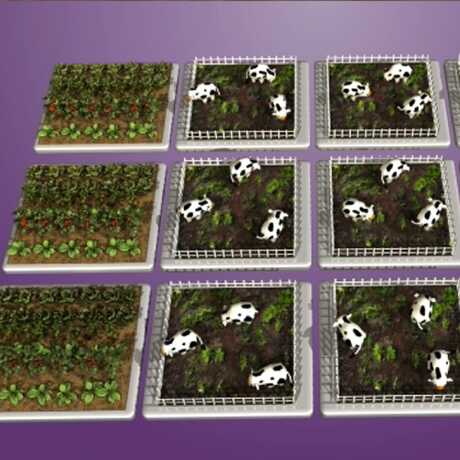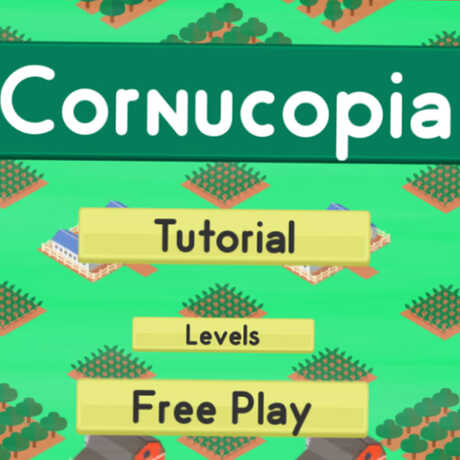Food, water, energy—we need solutions to the environmental issues of our day.
© 2015 California Academy of Sciences
In this two-day lesson, students will be introduced to several issues related to the social, economic, and environmental impacts of our current food system, including food waste, food deserts, agricultural land use, and the environmental impacts of diet choices.
On Day 1, students will explore how too much food and too few food options are both important issues that need our attention. Students will interpret maps to try to identify food deserts in San Francisco. They will also examine three (perhaps surprising) examples of food items that are often thrown away but are in many cases usable and edible, like misshapen produce, foods with ‘expired’ sell-by dates, and leftover or surplus food.
On Day 2, students will examine how both agriculture and the foods we choose to eat can impact the environment. They will explore the impacts of clearing land for agriculture by reading about how and where rainforests are being cut down to make more room for crops or cattle. They will also compare the ‘land footprints’ of different kinds of foods and diets by looking at what different people around the world eat.
- What factors limit or influence the types of foods that people can buy or eat?
- What impact do our diet choices have on the environment?
- Why does perfectly good food get thrown away?
- How does clearing land for agriculture impact various ecosystems?
Students will
- Explore several issues surrounding our current food system, including food waste, food deserts, agricultural land use, and the environmental impacts of diet choices.
- Learn more about how food sustainability and environmental issues are impacting people and habitats around the world.
- Sustainability: the ability of a system to last or endure; meeting current human needs without endangering our descendants
- Land footprint: the total amount of land required to produce something (e.g., to grow crops, to raise farm animals, or to mine minerals)
- Food system: all of the steps a food goes through from being grown to being consumed, including packaging, transporting, and selling.

- Computer with Internet access
- Projector
- Flipside Science video: The Environmental Impact of Feeding the World
- A computer lab with at least one computer for every 2 students (for Day 2 only)
- The Environmental Impact of Feeding the World Journal (1 per student, also available in Spanish, Simplified Chinese, and Traditional Chinese)
- A few (2-3) very misshapen fruits or vegetables (e.g., from a local farmer’s market)
- A few (2-3) empty restaurant take-out containers
- A few (2-3) packaged food items with ‘expired’ sell-by dates (but that are not spoiled)
- Examples of processed and packaged convenience store food items (like cheese puffs, candy, bottle of soda)
- Print out one The Environmental Impact of Feeding the World Journal per student
- Set up stations around your classroom with the following materials:
Food Waste Station: Misshapen fruits/vegetables, empty take-out containers, packaged food items with expired sell-by dates
Food Deserts Station: Examples of processed and packaged convenience store food items
- Introduce your students to food sustainability and environmental issues by showing them the Flipside Science: The Environmental Impact of Feeding the World video.
- Ask for volunteers to talk about one or two things they learned from the video, and make a list of these things on the board. Explain that the youth in the video are talking about some important environmental and sustainability issues related to food. Check that students have an understanding of what ‘sustainability’ means.
- Replay the video for students a second time.
- Working in pairs, students will dive deeper into two of the food sustainability and environmental issues introduced in the video (they will explore the other two issues during the following class period or hour).
- Divide students as appropriate among the stations so small groups can explore the materials up close. It may be best to have students pair up with a single thinking buddy as they complete their journal.
- Give students 15 minutes at each station, and then have them switch.
- After students have completed the two activities, bring everyone back together as a class.
1. Ask students to share some of their thoughts from the food waste station activity. After you have heard from several students, tell the class that all of the food items at that station are edible and unspoiled.
- Why do you think people don’t like to eat produce that isn’t perfectly shaped? How could you inspire or encourage people to embrace misshapen fruits and vegetables?
- What do you think the ‘sell by’ date on a food package actually means if it isn’t the date the food is no longer edible? Why do the producers put this date on there?
2. Ask students to share some of their thoughts from the food deserts station activity.
- How do you think we could help people who live in food deserts to have better access to fresh, healthy, and affordable foods?
Students will continue to work through the two remaining activities their Journals: Clearing Land for Agriculture and Comparing Diet Land Footprints. These activities require students to have access to computers with Internet connections.
Teacher tip: If you are not able to devote two days to all of the Journal activities, you can assign the remaining activities as homework!
1. Book the computer lab for a full class period, and have students work in pairs to complete the rest of their journal. Leave 15-20 minutes at the end of the class period for reflection and discussion.
1. Ask students to discuss some of their thoughts from the two web activities in small groups, then discuss as a class:
- How can the choices you make about what you eat impact the environment?
- Why is the land footprint of meat larger than it is for vegetables and grains?
- What influences the choices people make in the foods they eat? Are people’s diets controlled solely by their likes and dislikes, or do other factors play a key role?
- How could we grow more food with less land?
2. Individual quiet writing reflection: Have students consider all four of the food sustainability and environmental issues that they explored over the past two days: food waste, food deserts, agricultural land use, and the environmental impacts of diet choices. Ask them to consider if they feel impacted by any of these issues. If so, which ones? How are they impacted? Do they know anyone else directly impacted by the same or different issues? Are there any easy solutions to these kinds of issues?
- National Resources Defense Council: The Dating Game: How Confusing Food Date Labels Lead to Food Waste in America
- California Academy of Sciences: Sustainable Grazing lesson
- California Academy of Sciences: How did human civilization spread? visualization clip
NGSS Disciplinary Core Ideas (Grades 6-8)
-
MS-ESS3.C: Human Impacts on Earth System
NGSS Science and Engineering Practices (Grades 6-8)
- Analyzing and Interpreting Data
- Obtaining, Evaluating, and Communicating Information
California's Environmental Principles and Concepts
- Principle I: Concept a
- Principle IV: Concept a, c
- Principle V: Concept a
How Can We Improve Our Global Food System?
In this lesson, students will practice rapid ideation—an important step in design thinking—by brainstorming solutions to issues surrounding our current food system.

While playing Cornucopia—a fast-paced farm simulator—you manage a plot of land, planting crops based on a number of factors, in order to meet a variety of food orders. Keep an eye on your water meter and your crop yields, and earn technology upgrades to make your farm as successful as possible before the season ends.
To feed our growing world, we need innovative solutions. In this unit, we'll explore environmental issues related to the food we grow and eat. We'll review topics from food waste to urban farming, and learn how simple choices we make impact our planet.
Browse All Materials:
- Activity: Food for Thought
- Activity: Exploring the Impacts of Feeding the World [you are here]
- Activity: Rapid Brainstorming: Improving Our Global Food System [up next!]
- Activity: Sustainable Food Solutions: Weighing the Pros and Cons
- Video: Urban Farming
- Video: Vertical Farming
- Video: Reducing Food Waste
- Video: Think Before You Eat
- Activity: Our Hungry Planet: Design Thinking Challenge
- Supplemental video: What's Up With Your Gut Microbiome?
- Supplemental video: Why Protect Pollinators?
- Supplemental video: Bugs for Breakfast
